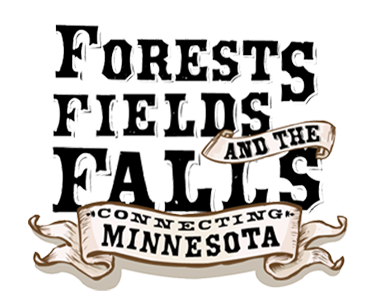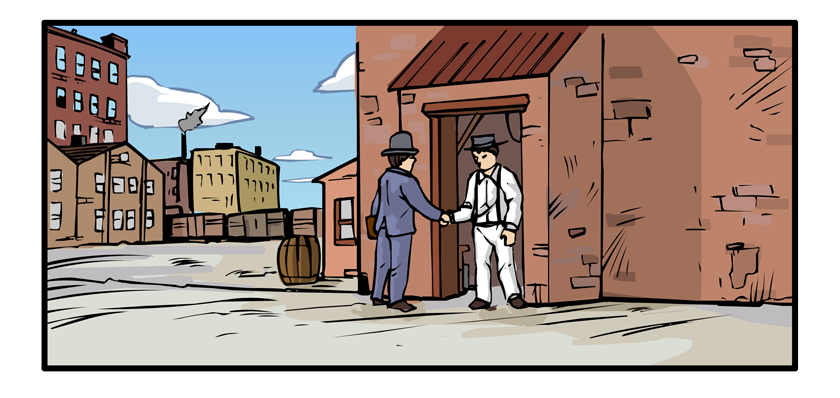Image
Forests, Fields and the Falls Home

(simplified)
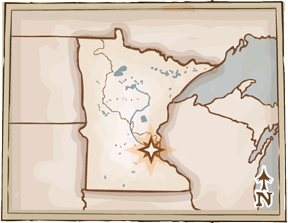
Minneapolis, 1886
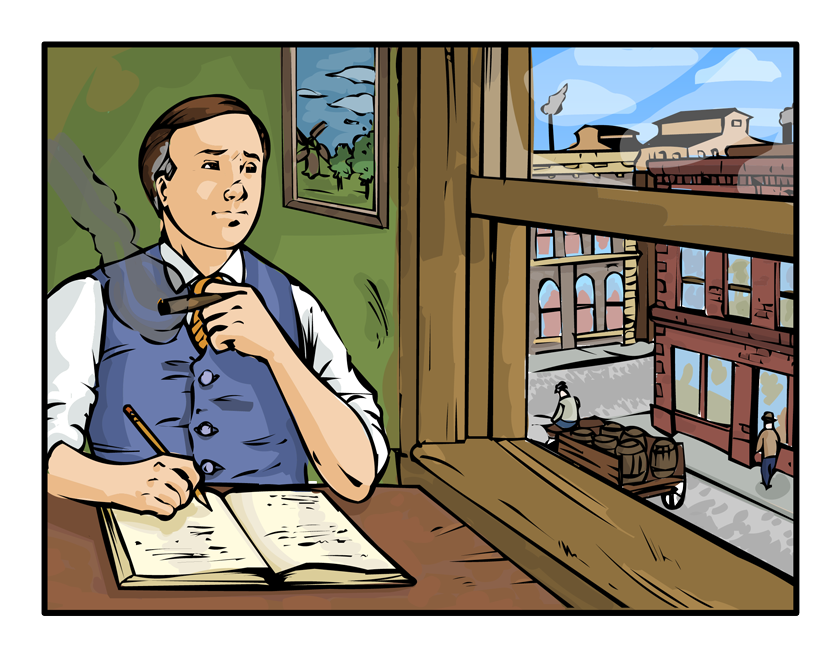
In today's world, there are many crooks and cheats in business. That makes it a pleasure to find a city succeeding through honesty and hard work.

crooks (noun): A person who steals, lies, cheats, or does other dishonest or illegal things.
I recently found such a place when I visited Minneapolis. This growing city is found in the state of Minnesota.
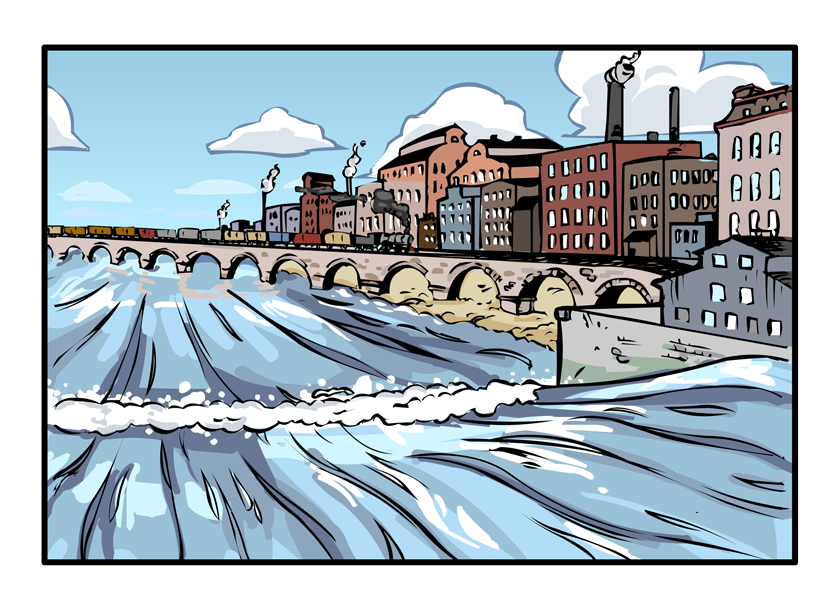
Its exciting development is partly due to the sawmills. The main cause, however, is the success of its flour mills.
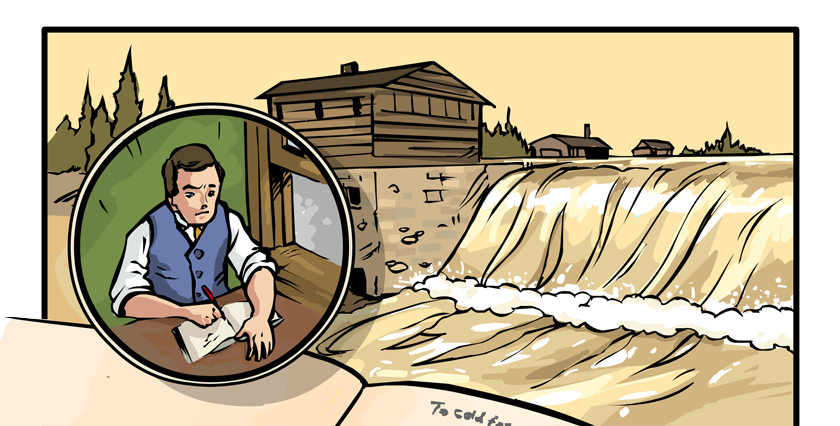
Flour milling in Minnesota had not always been successful. When the first mill was built at the Falls of St. Anthony, the flour milled in Minnesota was very poor quality.

It came from "spring wheat" and it had harder and smaller wheat berries than "winter wheat." Winter wheat only grew further south, in places like Kansas. Settlers were flocking to Kansas to grow wheat, but not to Minnesota.
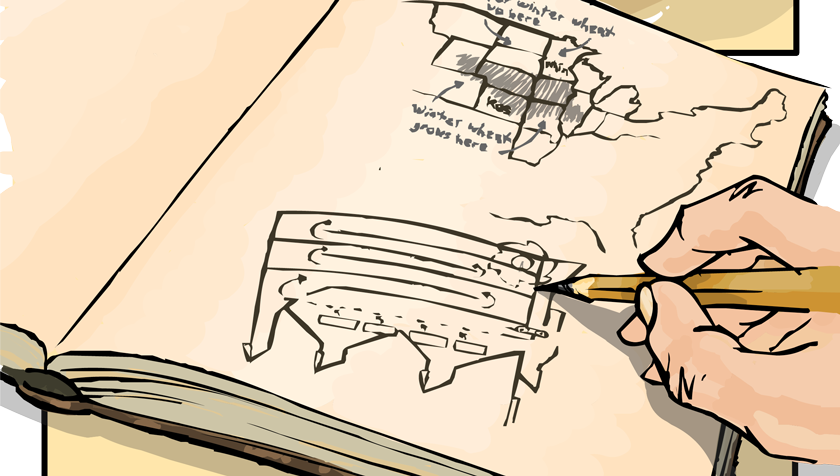

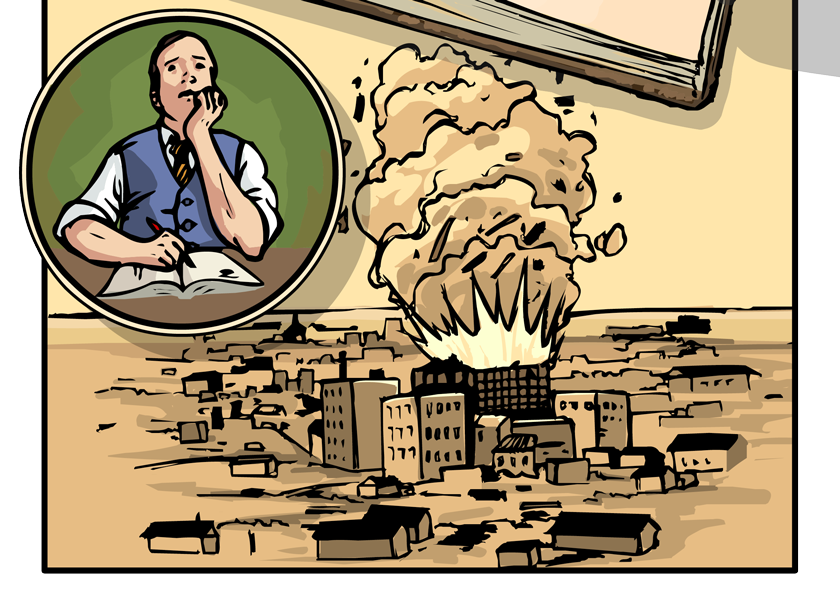
Things changed with the invention of the middlings purifier. This piece of equipment removed the hard outer covers of the wheat berries grown in Minnesota and Dakota, and resulted in a very high quality flour. It was even better than the flour from Kansas.
But the middlings purifier creates a large amount of flour dust. In 1878, this flour dust caused a terrible accident. It filled the air of the big Washburn A Mill and ignited. The mill exploded as though it had been blown up with dynamite.
In an instant the towering stone building was nothing more than a pile of rubble. Eighteen men were killed. Nearly half of the mills in Minneapolis were destroyed.

ignited (verb): Lit on fire.
towering (adjective): Very tall.
rubble (noun): The broken remains.
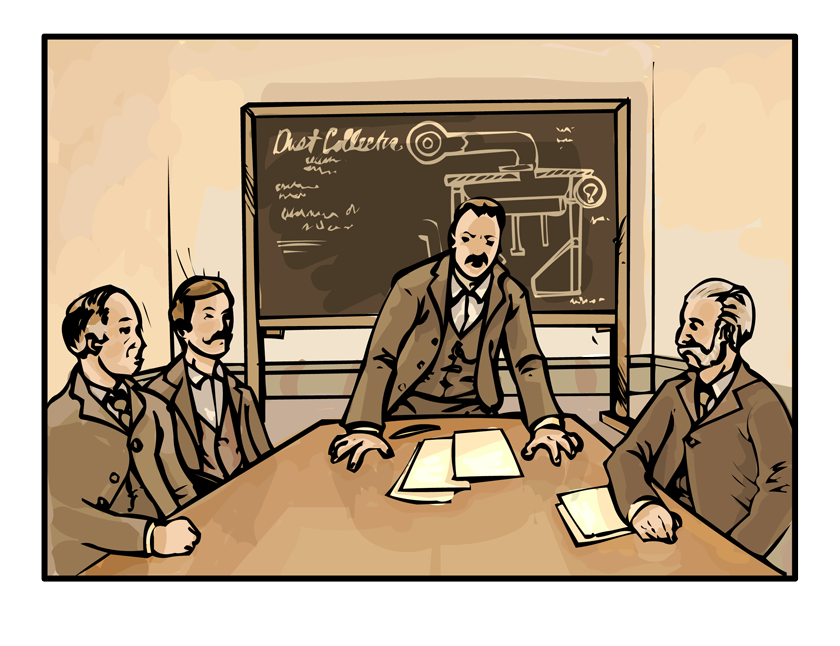
C. C. Washburn and the other flour mill owners wanted to rebuild. But they wanted bigger, safer, and better mills.
A new process was created that decreases the risk of explosions. New dust collectors and giant iron rollers were added along with the middlings purifiers. This combination reduced dust and gradually ground the wheat to flour.

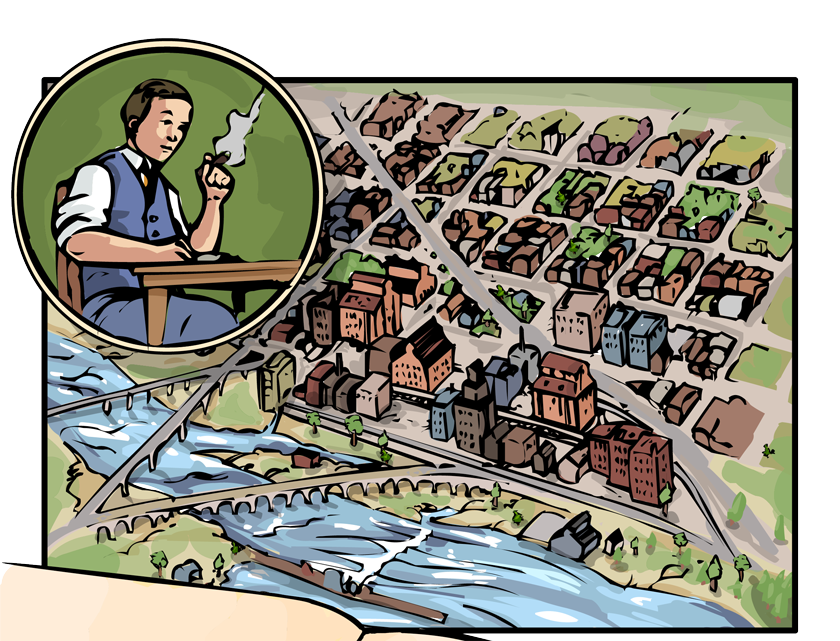
Since this new equipment was added, there have been no explosions in Minneapolis mills. The success of this newer, safer milling process has helped build the beautiful "Mill City."
It has also changed farming conditions in the region. Spring wheat, which grows so well here, is now in great demand.

Settlers poured into Minnesota and Dakota. Railroads were built and towns sprang up as if by magic. The bare lands of the prairie were turned into wheat fields.
conditions (noun): Situation or state of being. In this case, the farming conditions refers to the success of farmers who were now able to make more money from their wheat.
demand (noun): A need or request.
poured (verb): Flowed like a stream.
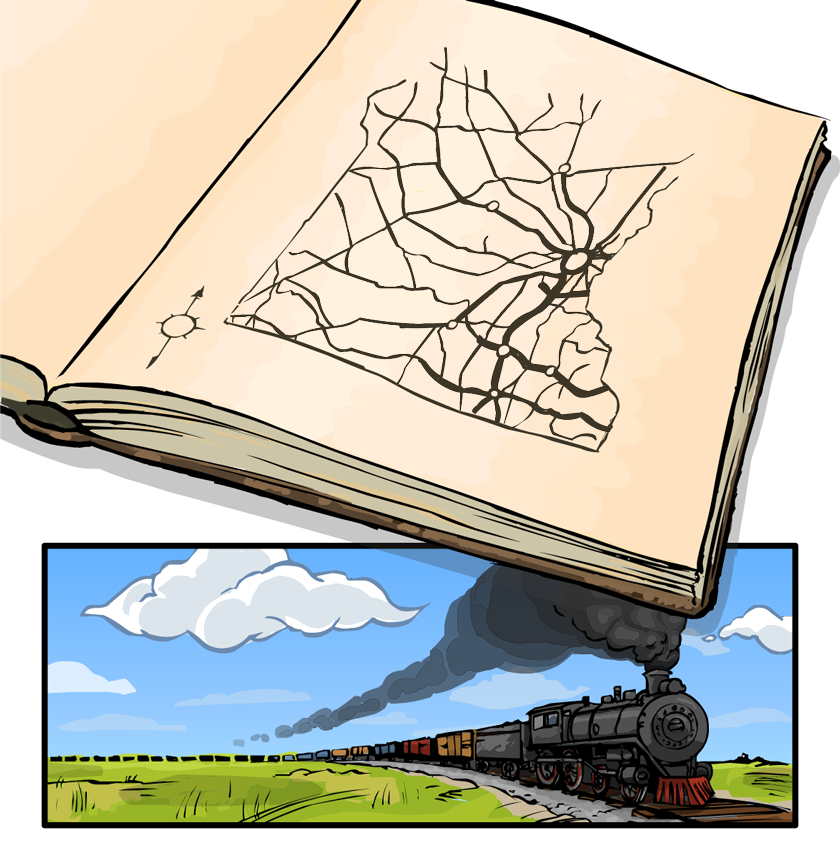
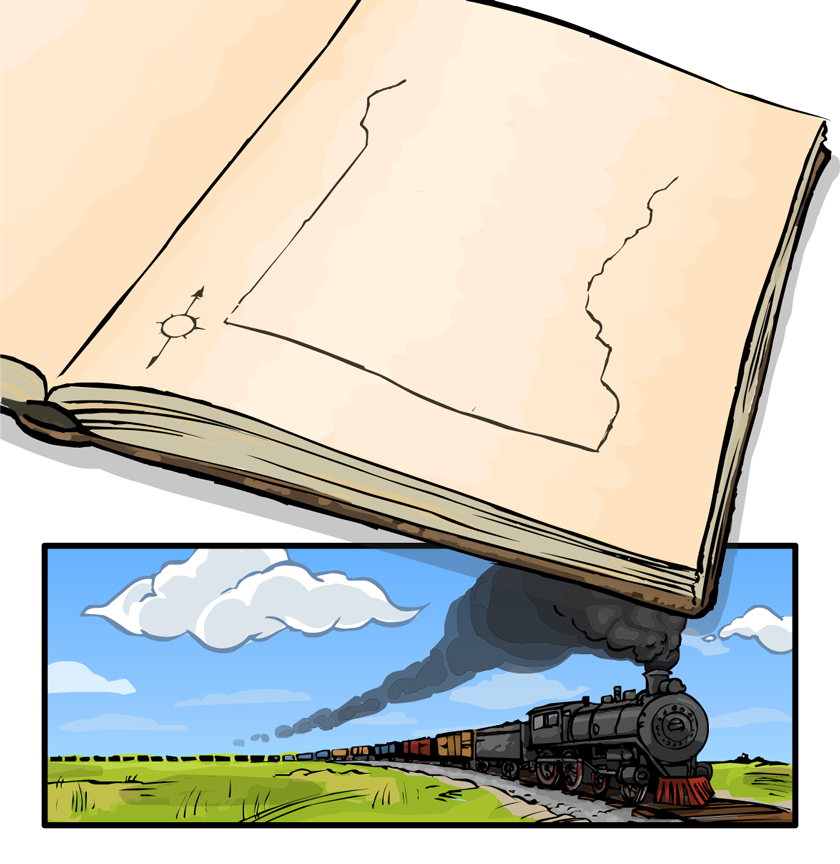
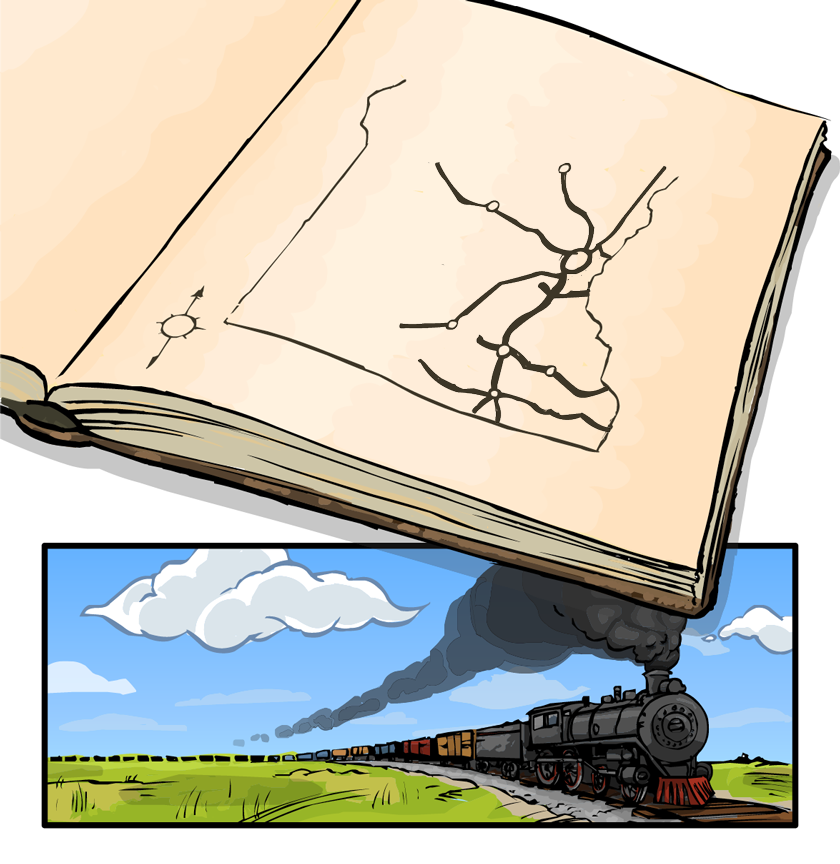
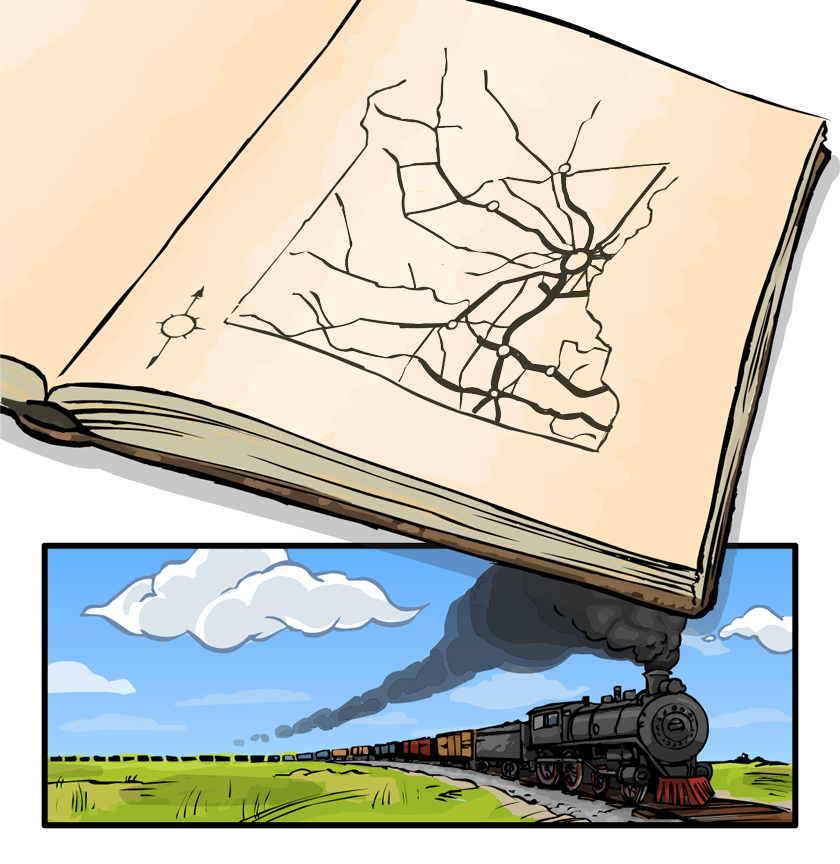


It has been said that the Minneapolis flour mills need 266 train cars filled with wheat every day in order to keep up with demand. This is equal to a train almost two miles long.
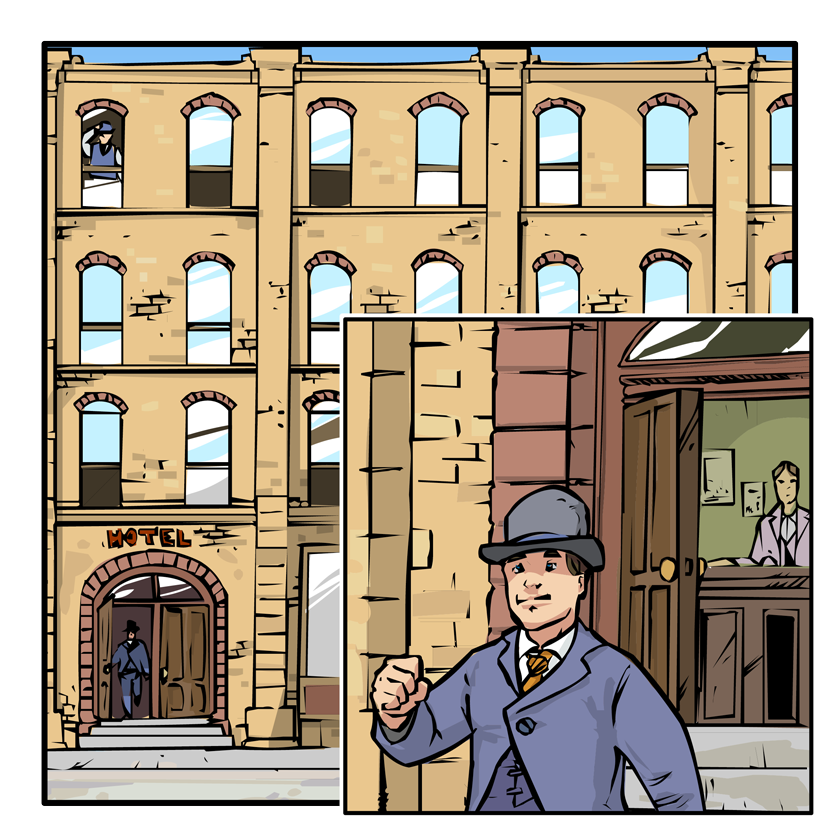
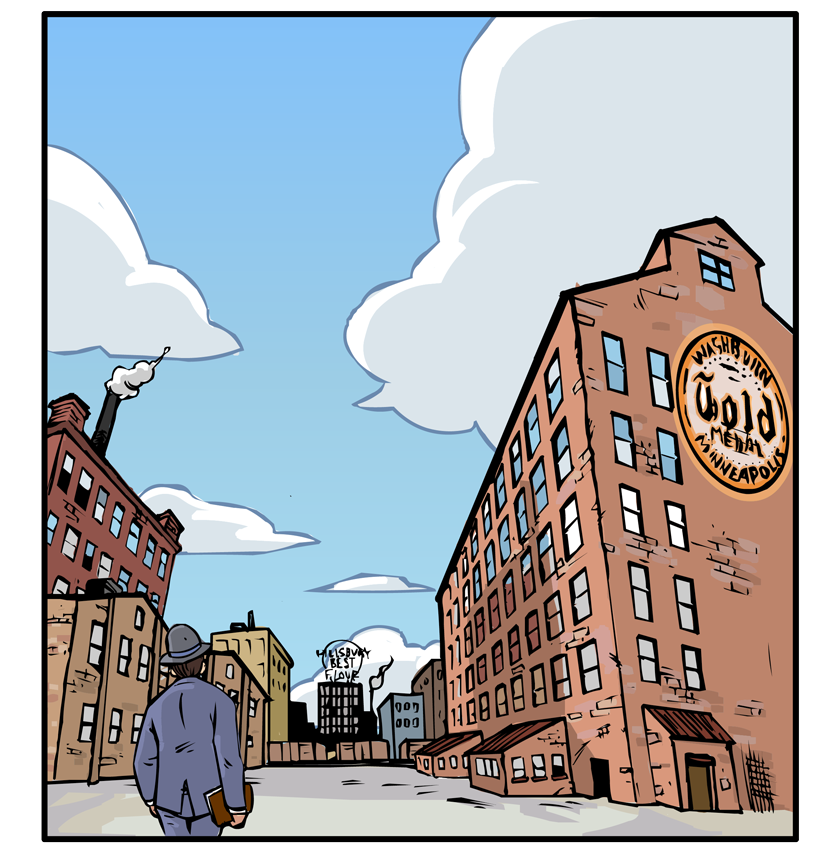
Twenty-six great flour mills stand in line on both sides of the Mississippi River at the Falls of St. Anthony.

A great flour mill is a wonderful combination of power and creative thinking. Each step is important and every piece of equipment has a purpose.

It is amazing to see how the wheat travels from machine to machine, from floor to floor, through nine floors of the building. Nowhere does it need the help of human hands. The whole mill feels like one large living organism.
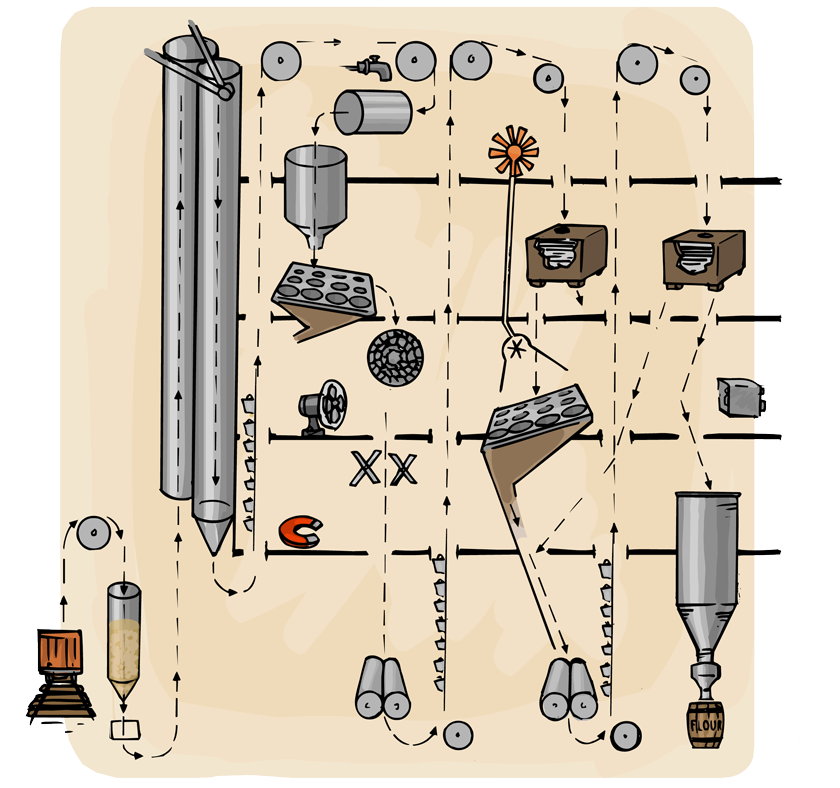

Scale tank (Weighs grain)
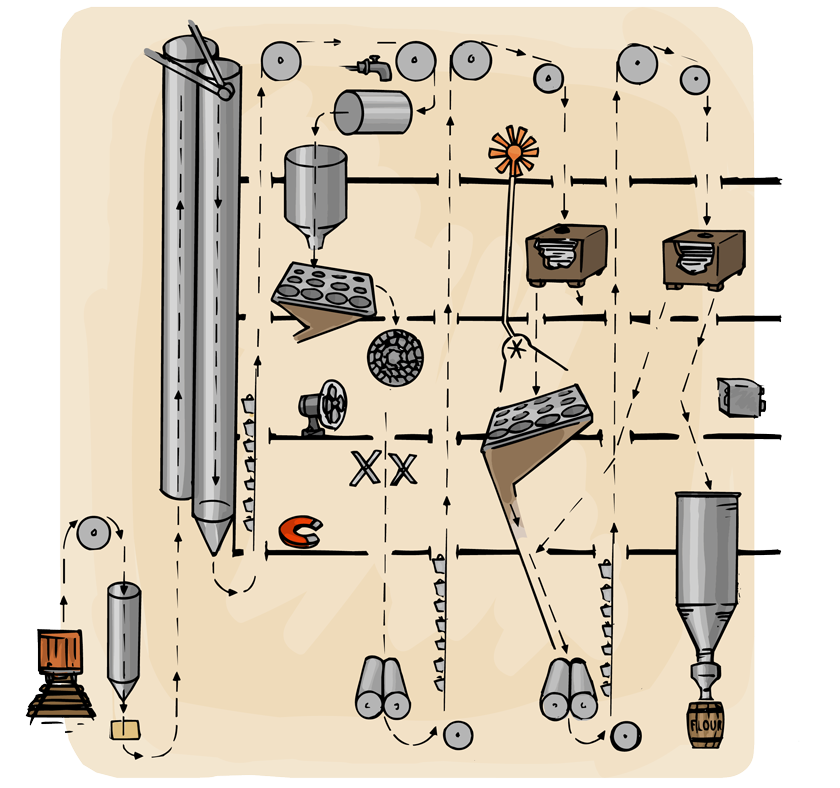
Receiving separator (Removes straw, etc.)
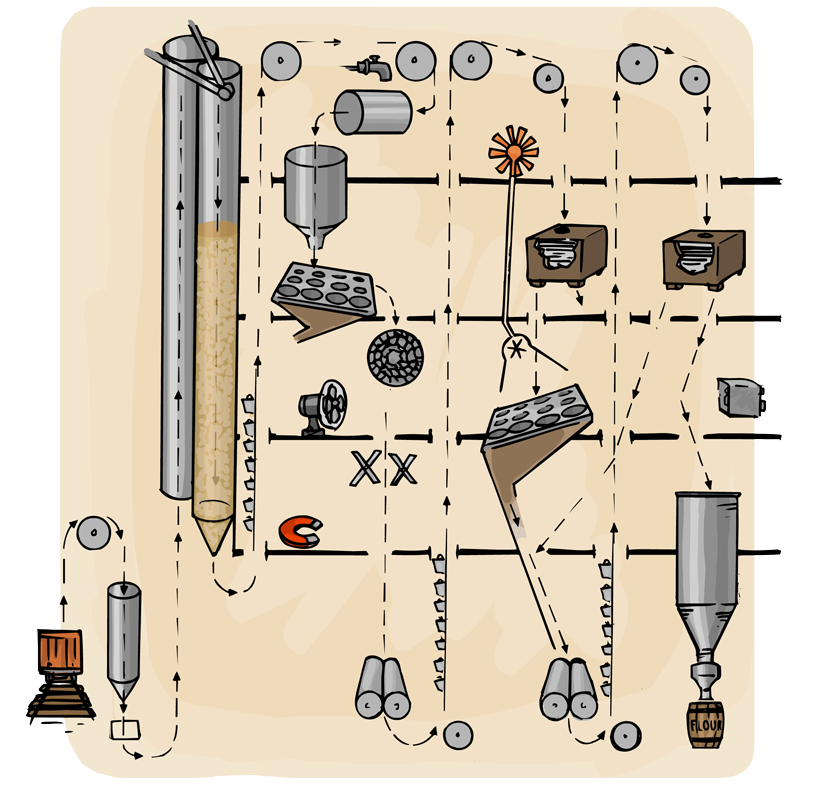
Storage bins (Reserves supply of wheat)
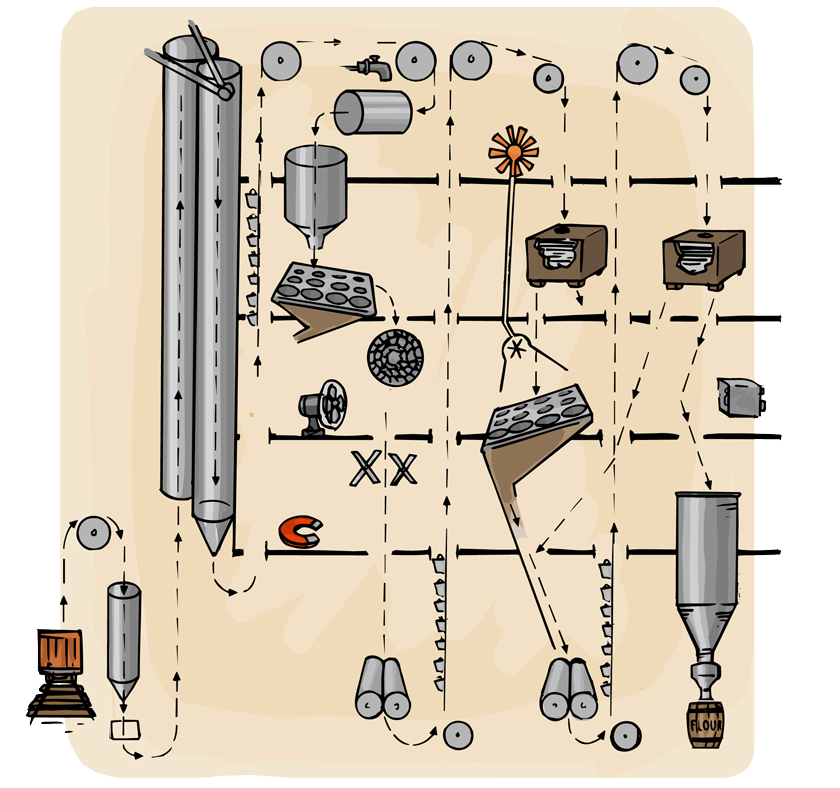
Bucket elevators (Raises flour stock)
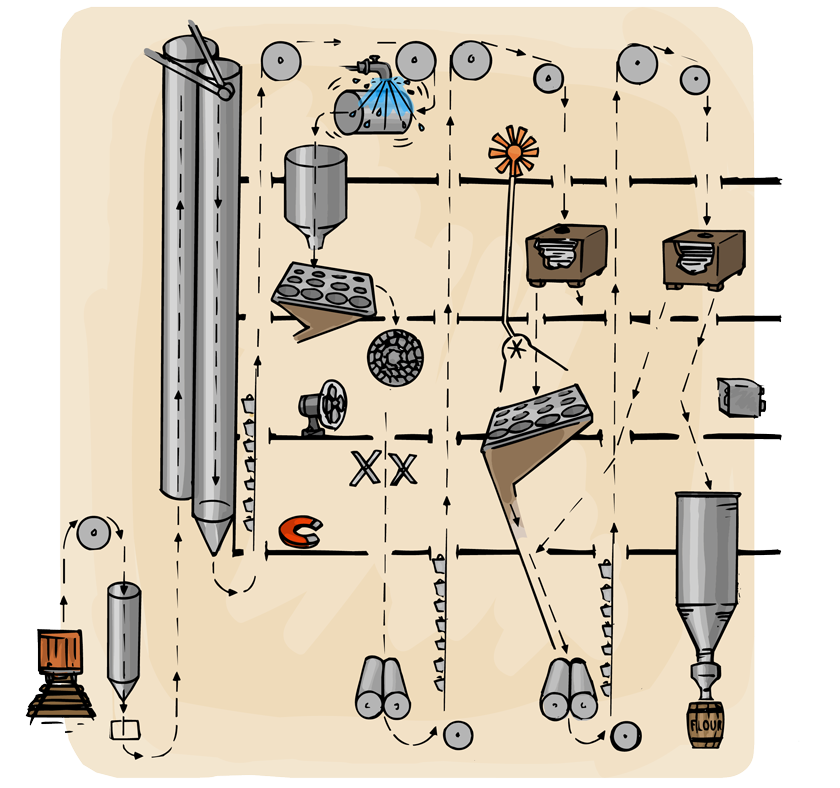
Wheat washer (Removes dust)
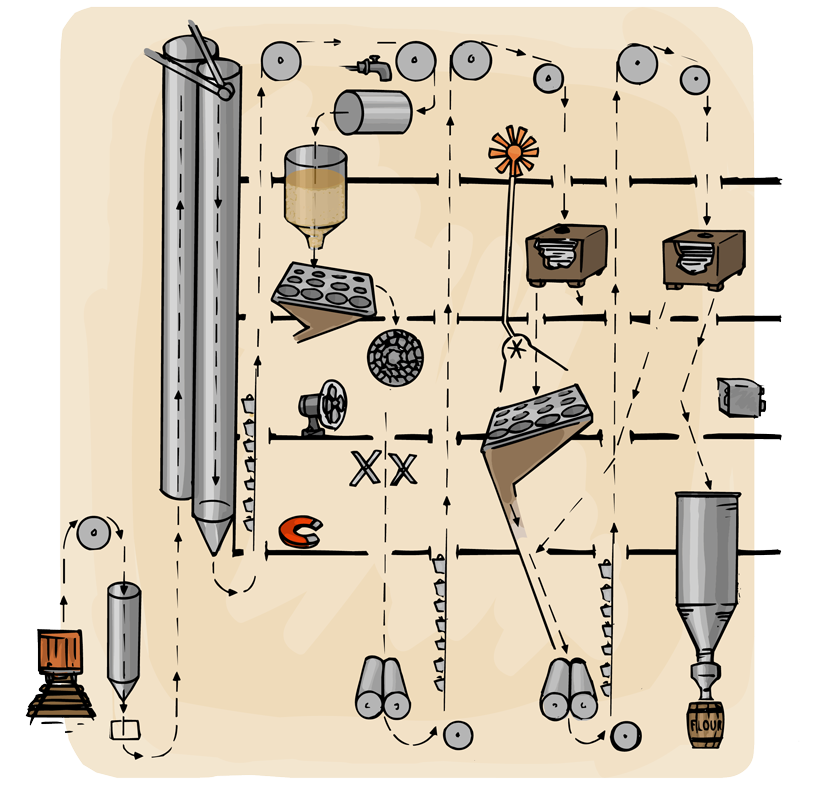
Tempering bins (Conditions wheat for milling)
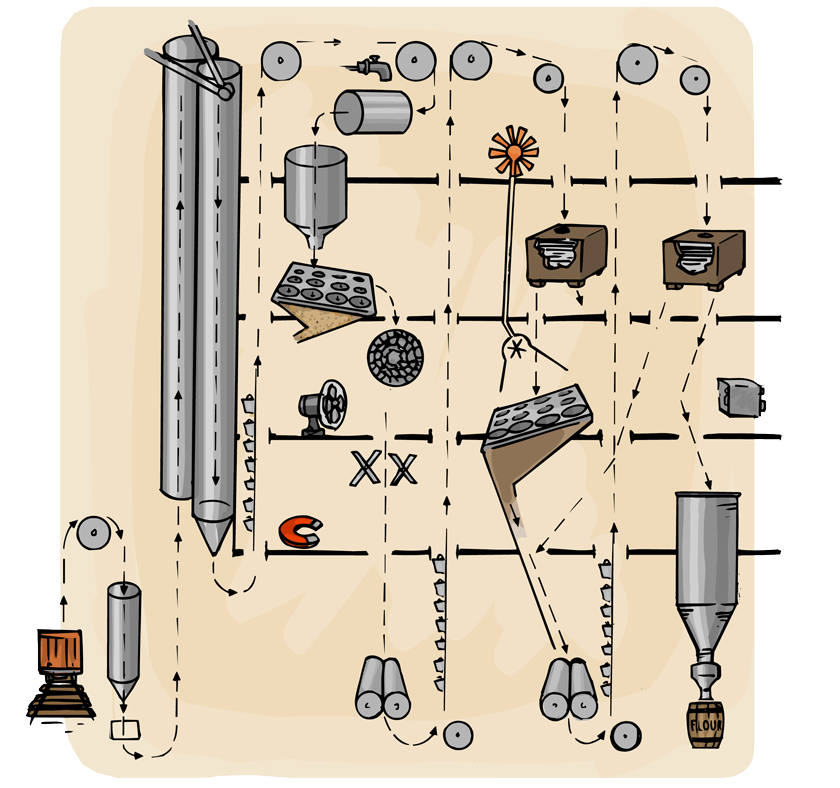
Milling separator
(Removes chaff and straw)
(Removes chaff and straw)
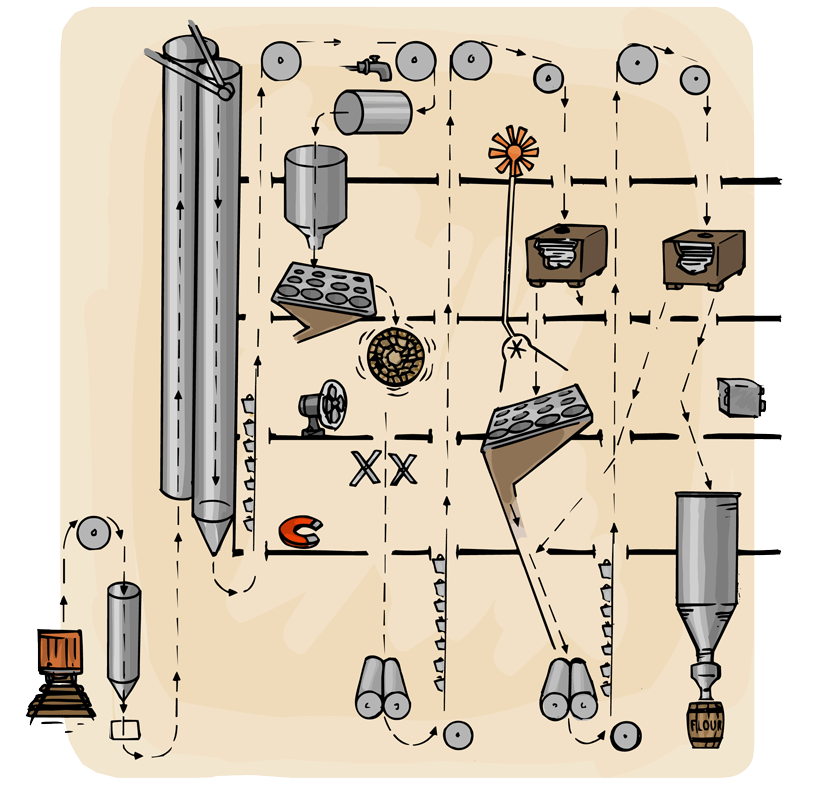
Disc separators (Removes seed)
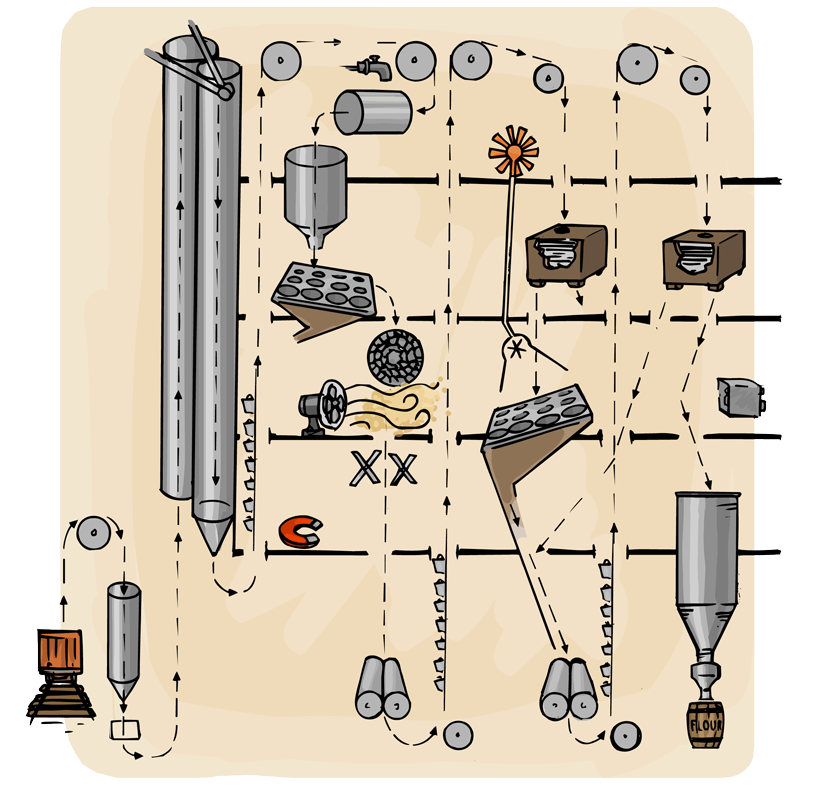
Aspirators
(Removes light particles)
(Removes light particles)
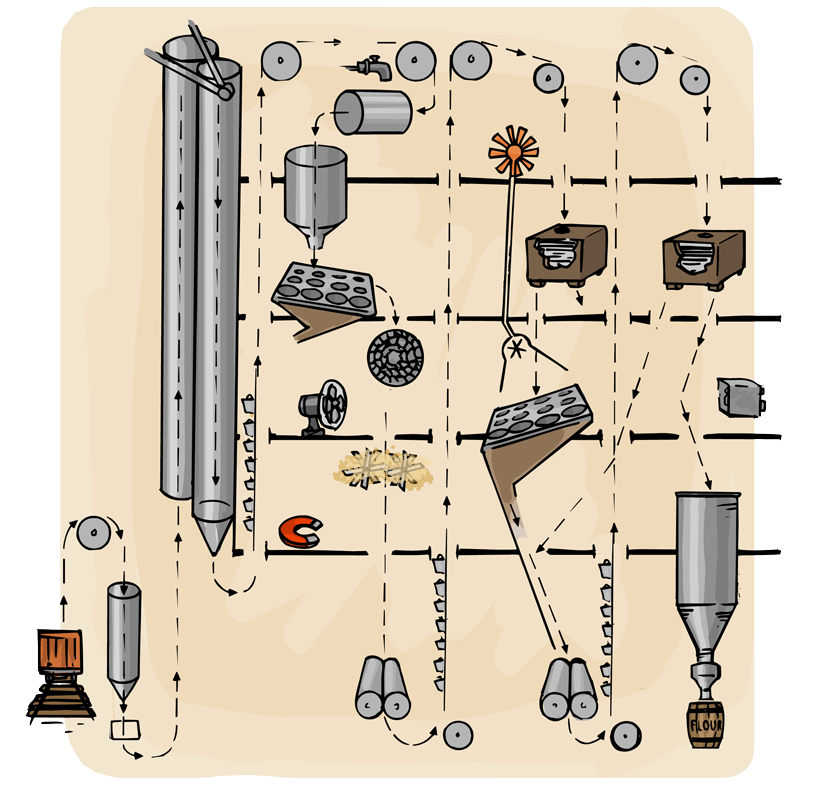
Scourers (Cleans and polishes)
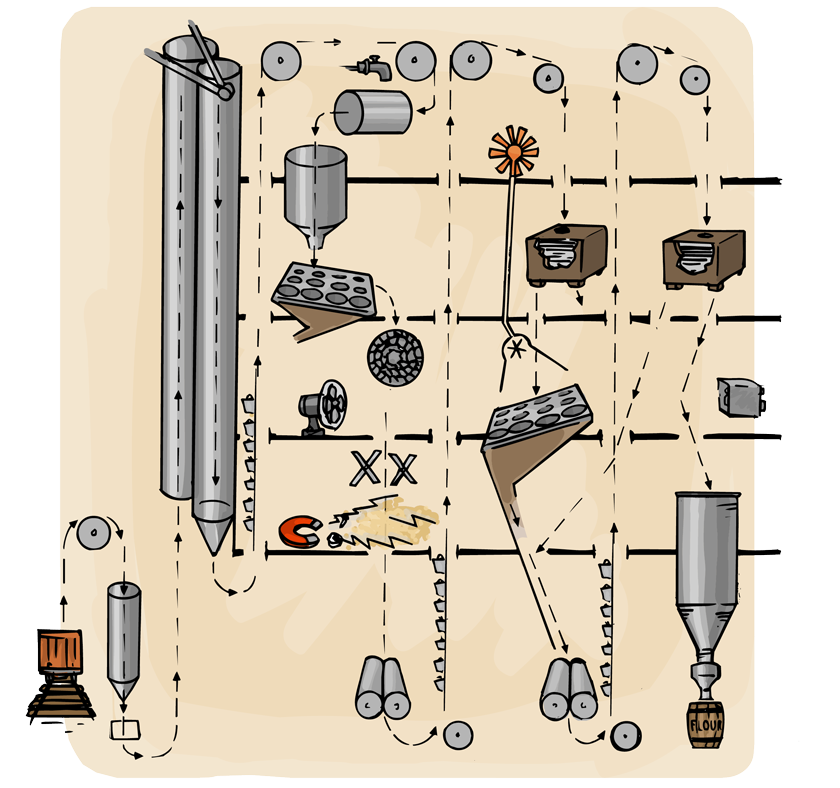
Magnets
(Removes iron particles)
(Removes iron particles)
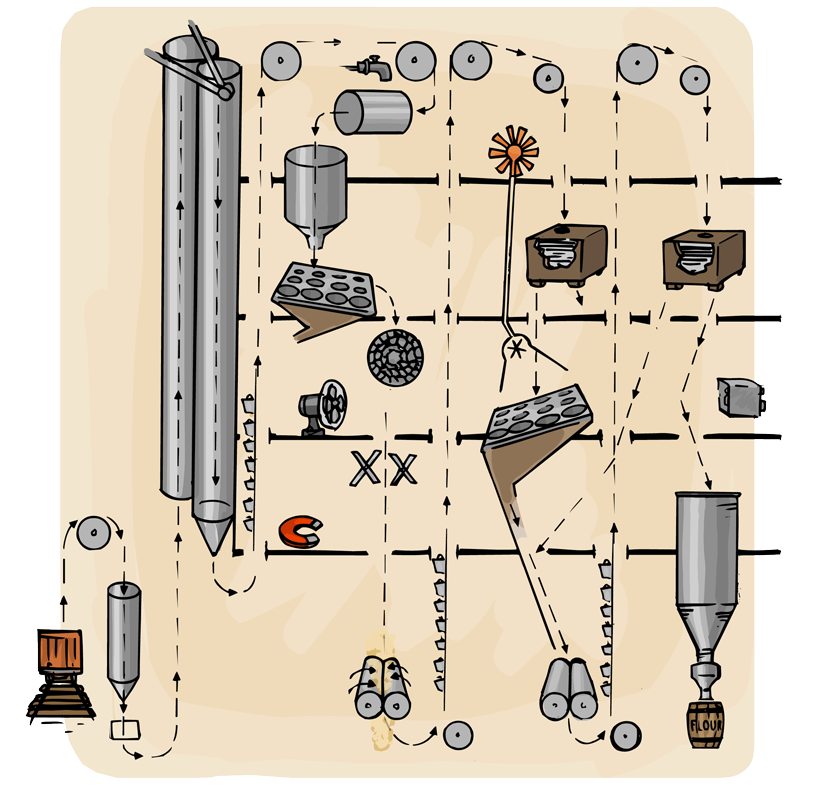
Grinding rolls
(Cracks open kernels)
(Cracks open kernels)
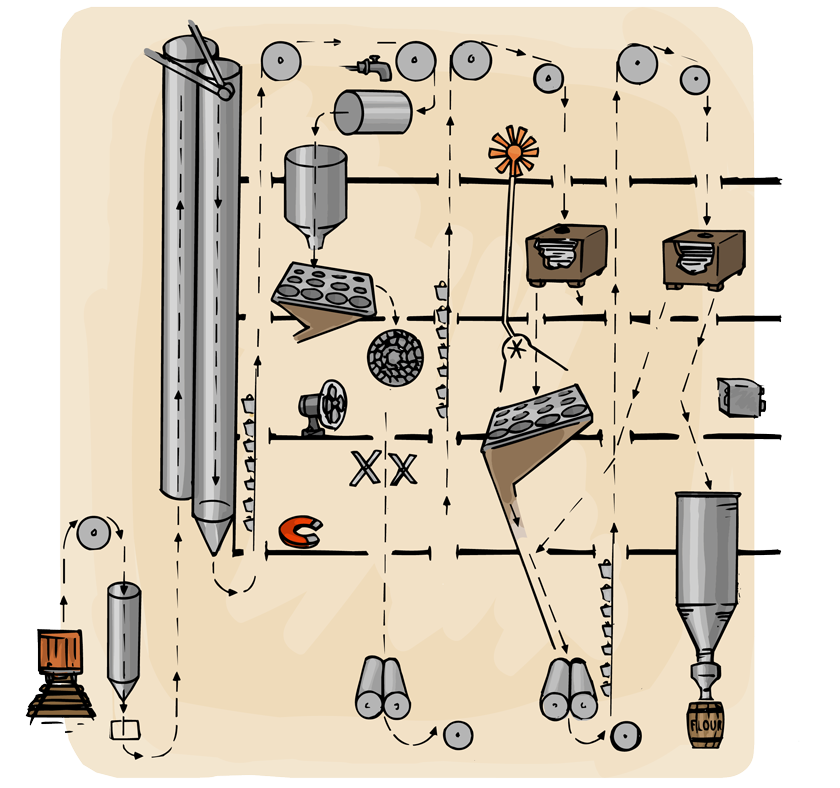
Bucket elevators (Raises flour stock)
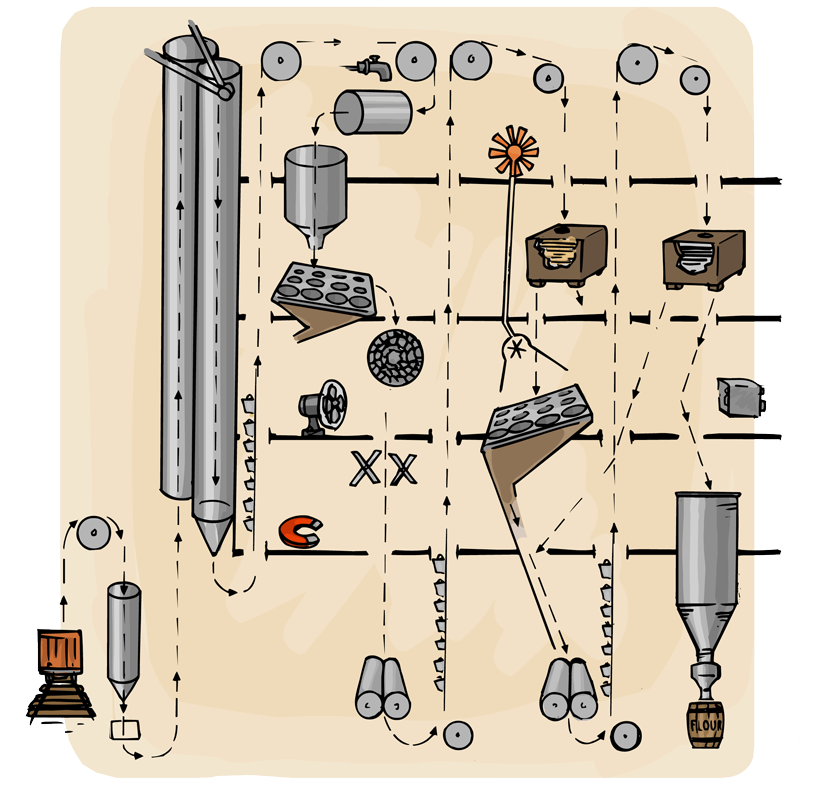
Sifters
(Separates stock)
(Separates stock)
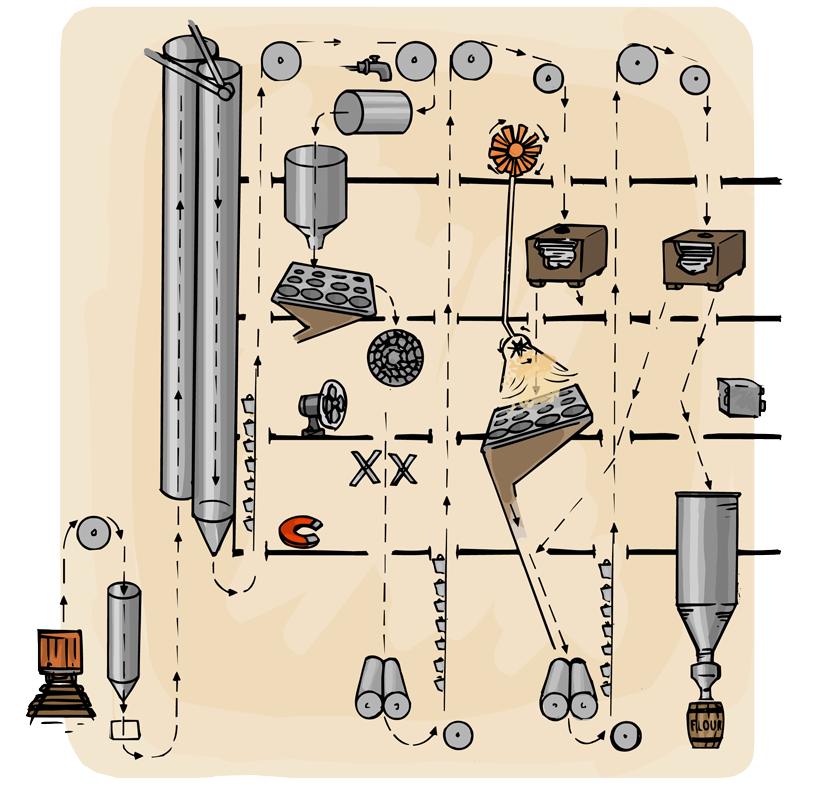
Dust collectors
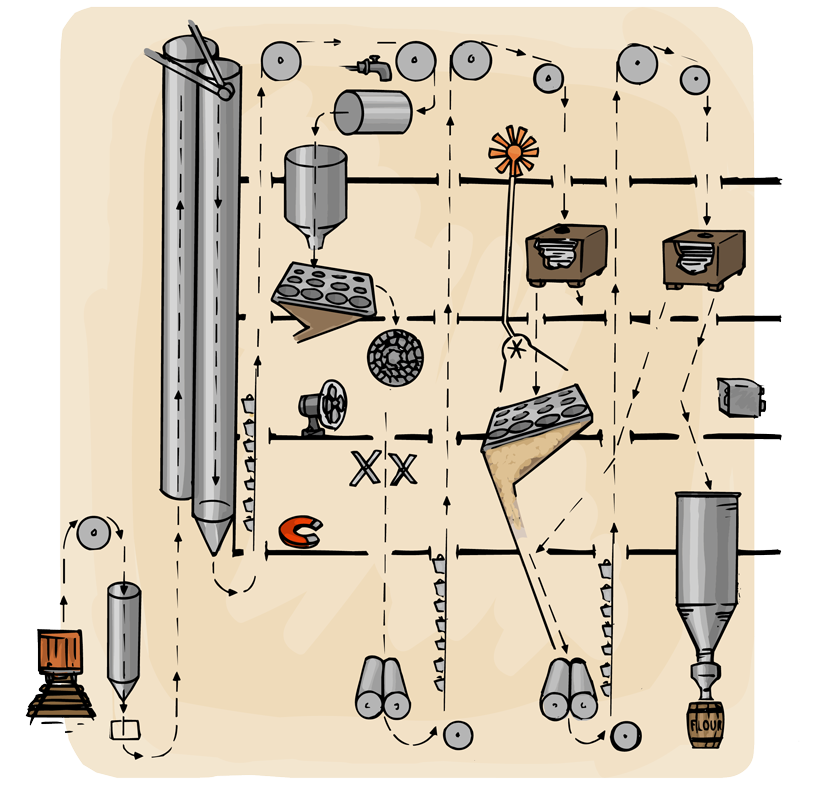
Purifiers
(Removes fine bran and beeswing, and grades stock)
(Removes fine bran and beeswing, and grades stock)
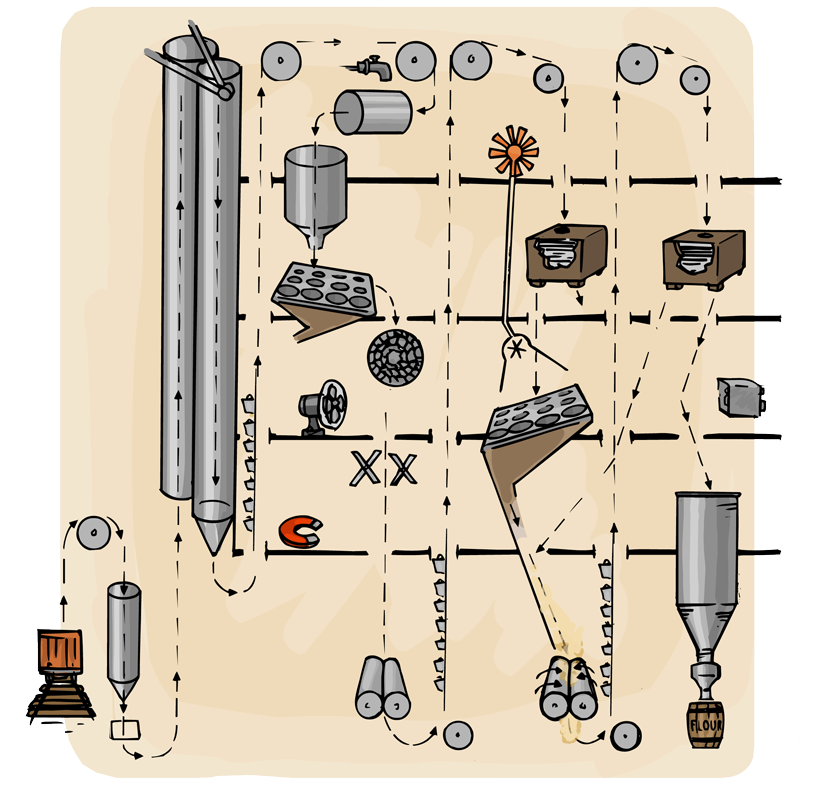
Smooth rolls
(Further reduces flour particles)
(Further reduces flour particles)
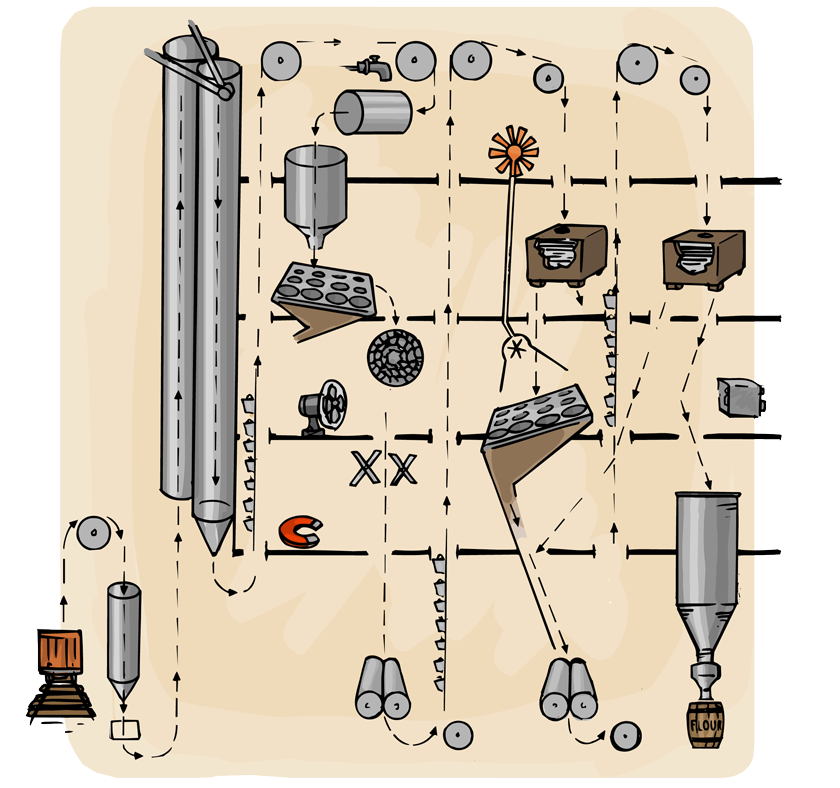
Bucket elevators (Raises flour stock)
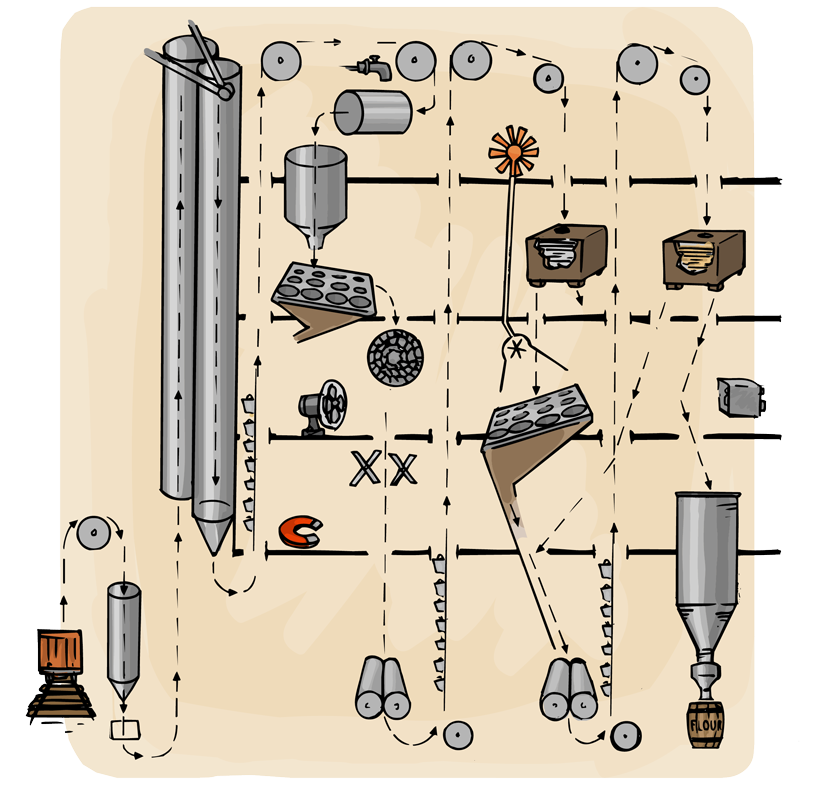
Sifters
(Separates stock)
(Separates stock)
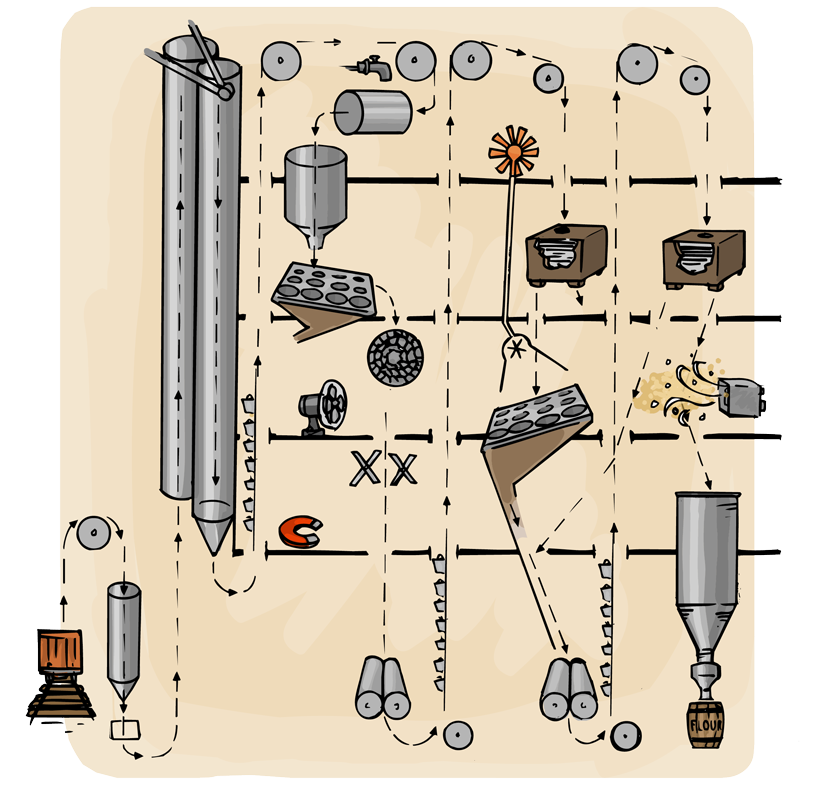
Vitamin enrichment
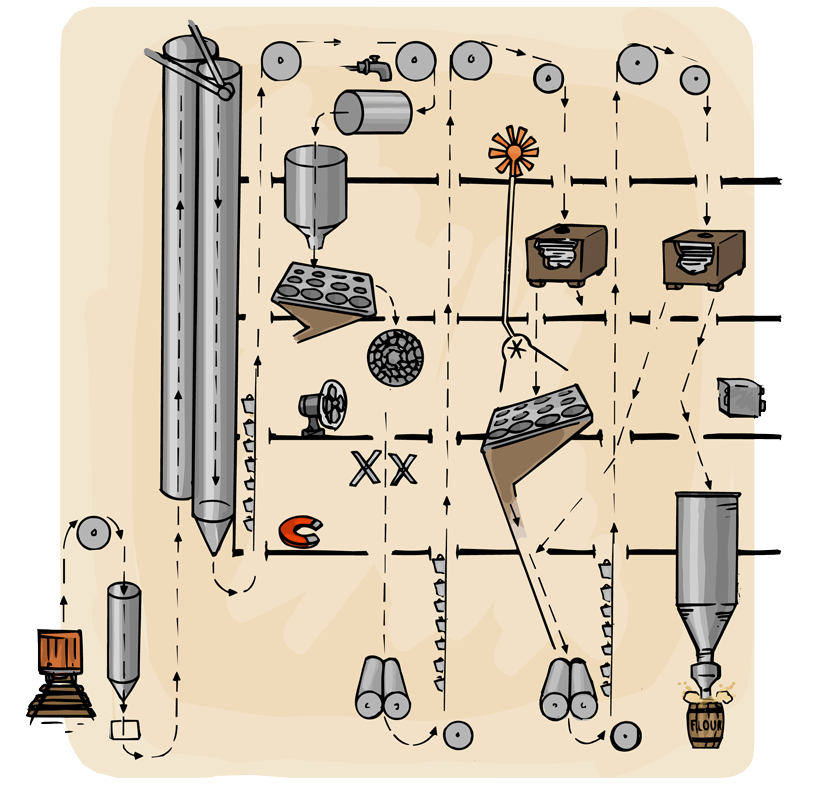
Flour packers

The entire building hums with the dull, buzzing noise of machinery. Workers are there to supervise or maybe to fix a broken machine, but they rarely ever touch the wheat.
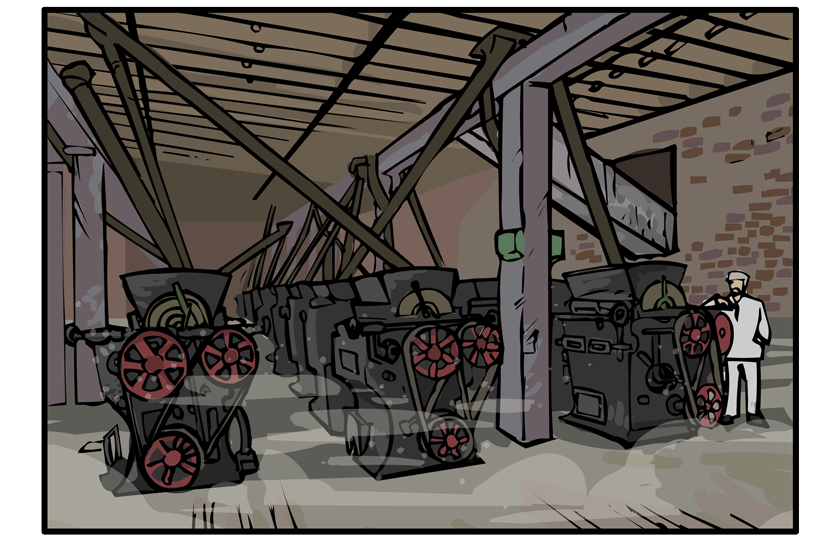
The wide rooms of the mill are crowded with machines that are arranged in straight lines. A visitor to the mills might think these rooms are deserted, because there might only be one man in a distant corner supervising 100 machines. These machines grind away all day from morning until night.
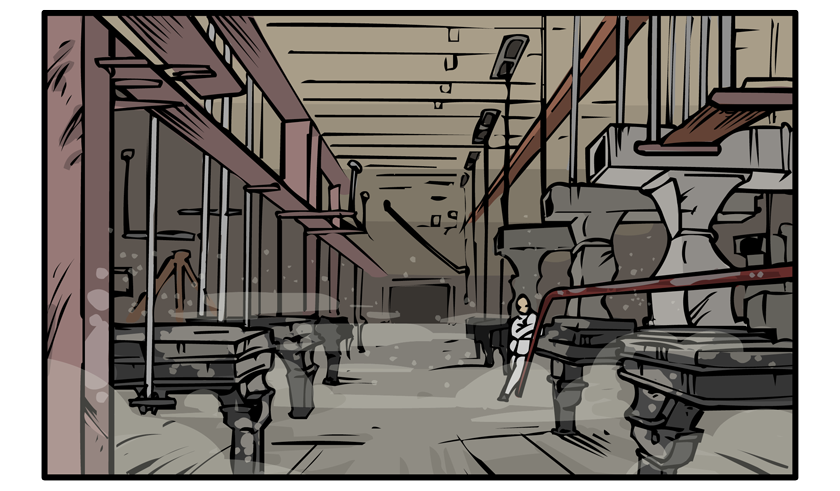

deserted (adjective): Abandoned.
Minneapolis ground 24 million bushels of wheat into flour last year in 1885. This year it expects to increase that total to 30 million bushels.
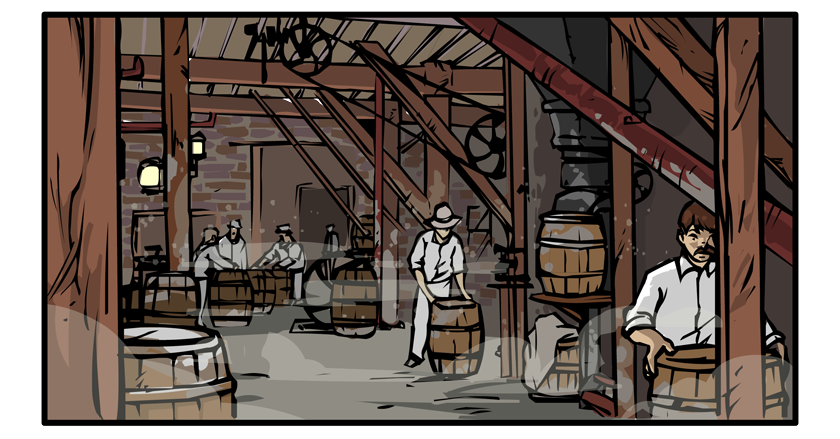

bushels (noun): A measure that contains eight gallons.
The wheat came in to the mills by train from Minnesota, Dakota, Wisconsin, and Nebraska. As flour, it will be shipped back out by train to these places and beyond.
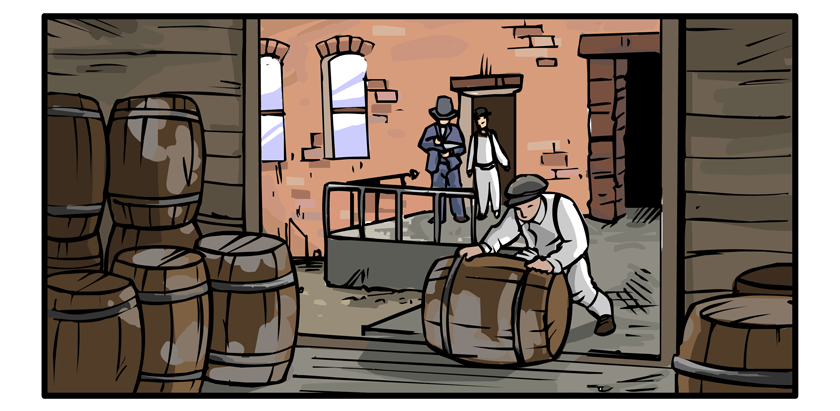
It seems like there is nothing to stop the continued growth of flour milling in Minnesota.
It is on the highways of rail transportation, which lead from the grain fields of Minnesota to the great cities and sea-ports of the East Coast.
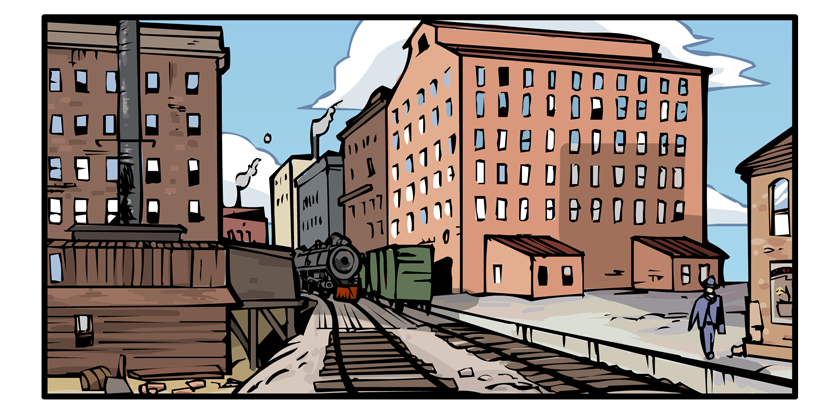
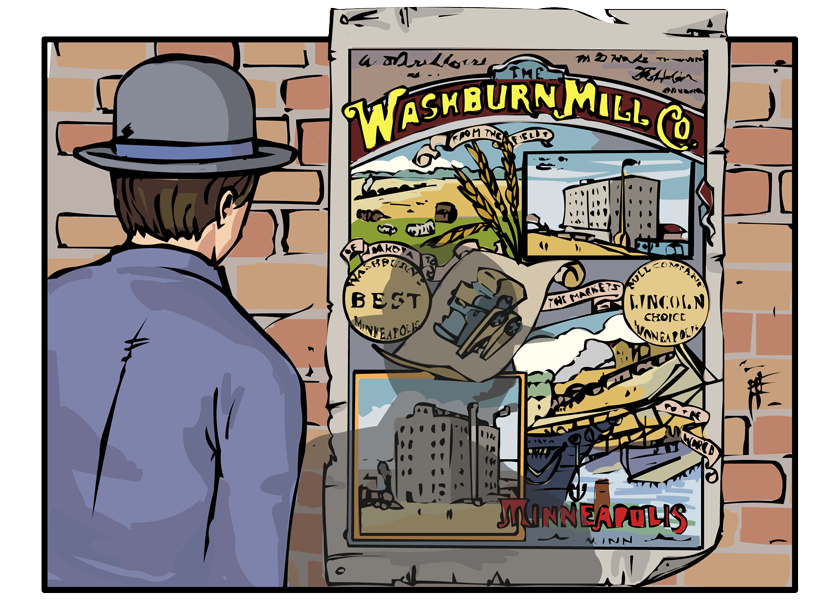
No place in the world can compare with Minnesota.
There are other advantages, as well. Minneapolis is blessed with water power from the mighty Mississippi River to run its great mills. The climate of the state of Minnesota is healthy and invigorating, and its people are smart and creative.

invigorating (adjective): Giving strength or energy.
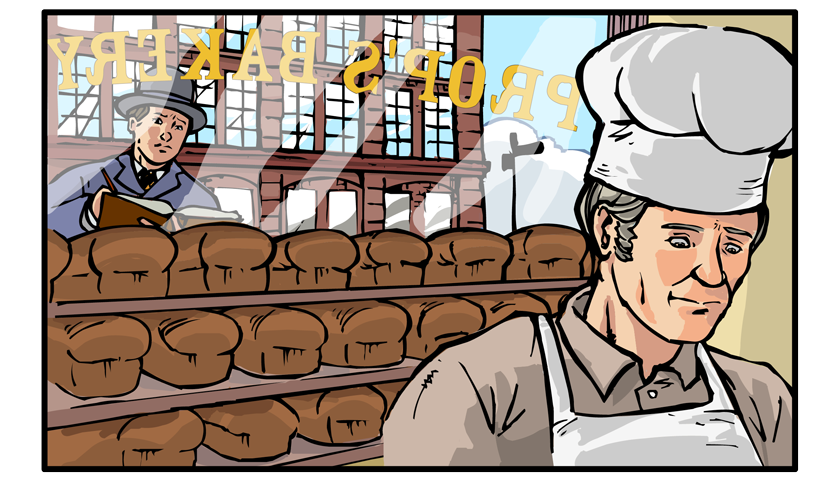
Flour from Minneapolis is regarded as the highest quality. When people see "Minneapolis" on a barrel of flour, they know they are getting the finest flour in the world. There can be no better bread than that made from flour produced in the mills of this fine city.
